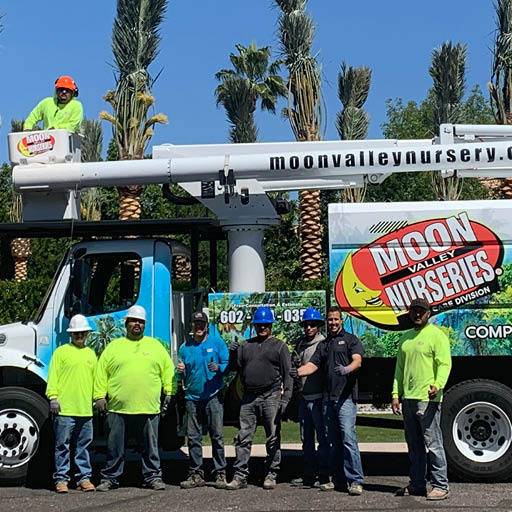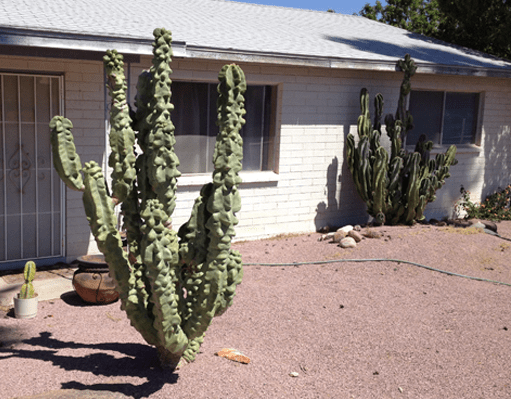Weather Protection

Weather Protection
We're subjected to mild and brief winter periods with a slight chance of freezing temperatures. Our summers can reach sustained periods of extreme heat, sometimes lasting for months, and are accompanied with the occasional monsoon. Our spring and fall seasons are rather pleasant and ideal for planting. Our intimate plant knowledge has enabled us to select certain species of trees and plants that will survive and thrive under these conditions. Some species will require more monitoring and caring than others, but this is a general guide for just about any tree or plant we carry at our nurseries.
Weather Protection
We're subjected to mild and brief winter periods with a slight chance of freezing temperatures. Our summers can reach sustained periods of extreme heat, sometimes lasting for months, and are accompanied with the occasional monsoon. Our spring and fall seasons are rather pleasant and ideal for planting. Our intimate plant knowledge has enabled us to select certain species of trees and plants that will survive and thrive under these conditions. Some species will require more monitoring and caring than others, but this is a general guide for just about any tree or plant we carry at our nurseries.

CLICK HERE to learn How to Prepare your Yard for Cooler Weather
Frost and Freeze Protection
Frost or Freeze conditions are pretty rare in our area, and unlike most areas in the country, they don't occur every year. Frost conditions, nights where temperatures reach below freezing (32F°) usually occurs January through middle to late February. Temperatures below freezing can cause damage to certain varieties of trees and shrubs that are not commonly grown in the area. If you have questions on the hardiness of your plants or how cold your particular area gets before purchasing new trees and plants, just ask your nearest Moon Valley Nursery. Smaller and newly planted trees and shrubs tend to be the most susceptible to damage from cold weather. All trees and plants can benefit from the following measures to help prevent damage from frost & freezing conditions:
1. Water with Care
The laws of thermodynamics prove that it is more difficult to cool humid air than dry air, so be sure to thoroughly water all of your trees and plants during periods of forecast frost or freeze. Also, get your entire yard wet in the evening before forecast/ freeze. This boosts the humidity in the immediate microclimate and will help minimize the effects of frost/ freeze on your trees and plants.
2. Cover with Frost Cloth
Where feasible, cover plants with a frost cloth or old blankets before a night forecast to bring a freeze. Don't use plastic - plastic increases the chance of freeze damage. For larger trees and plants, you can apply Frost Proof insulating spray. This applies a thin layer of a wax-like substance that minimizes evaporation from the leaves, thus minimizing frost/freeze damage. Frost Cloth & Frost Proof spray are available at all Moon Valley Nurseries.
3. Provide some Heat
People have had success in preventing frost/freeze damage by stringing up Christmas lights in their trees. The older style lights (incandescent) provide the best warming effect. It may sound silly, but a few degrees can make a huge difference. There are other popular methods of protecting against freeze damage, but due to the unpredictable and uncontrollable nature of weather, they aren't guaranteed to work.

-
BACKYARD BUILDER
Design your own custom landscaping. Learn more.

-
SCHEDULE A FREE CONSULT
Let our design experts help with your next project. Get started.
Extreme Heat Protection
Our area is well known for long summers of dry, sustained heat. When daytime highs reach 110° for 3 or more days in a row, this is considered extreme heat. Some plants thrive in these conditions (such as cacti), but others require protection. There are a few things to watch out for during extreme heat - soil will dry quicker, younger trees may see the sun scarring (sunburns for trees), and run out of nutrients sooner. The most important thing to remember during these periods is that trees & plants simply require more water to survive.
1. Add extra Watering Days
During periods of sustained excessive heat, we recommend adding one day or irrigation to your watering cycle - this is the easiest and most crucial step to take in protecting your plants. It's best to water in the evenings because this allows maximum absorption by the trees and plants before the next day arrives. You want to avoid over-watering your trees, but the soil should be somewhat moist for most of the day. Unlike the regular weather, it's advisable to keep the soil around your trees moist, rather than let them dry between waterings.
2. Paint prevents Sun-Scarring
To avoid sun-scarring, especially on younger trees and plants, wrap or paint your trees. Any reflective paint or wrap around the trunk will work - we sell everything you need, and can give you detailed instructions on applying it to your specific trees and environment.
3. Keep an Eye out
We recommend keeping a close eye on your trees and plants during hot summers. It's normal for some plants to wilt during the day - this doesn't always mean they're dying - it's the plant's way of minimizing water usage when it needs to conserve. If you notice sustained sun-scarring or wilting, and the tree has a constant 'sickly' appearance, and you've taken the steps above, give us a call at 602-938-6666, or contact our experts here, and we'll try to diagnose the problem.
Don't Forget!
Moon Valley Nursery grows our trees and plants at our desert farms, so they are well-suited for our summers. It's never too hot to plant Moon Valley trees!

-
BACKYARD BUILDER
Design your own custom landscaping. Learn more.

-
SCHEDULE A FREE CONSULT
Let our design experts help with your next project. Get started.




Validate your login